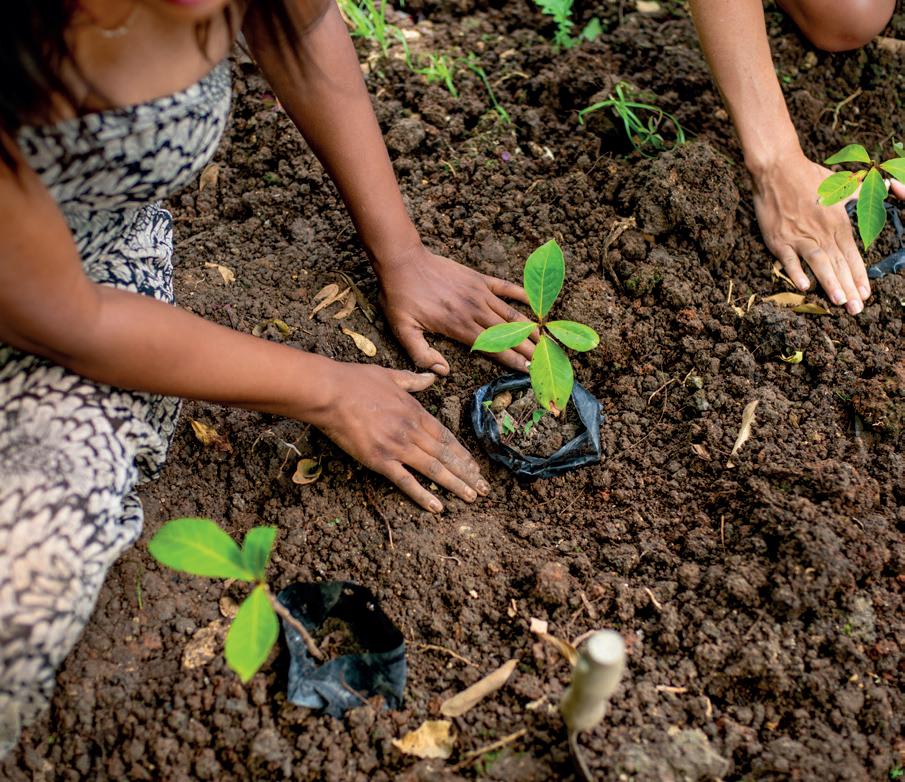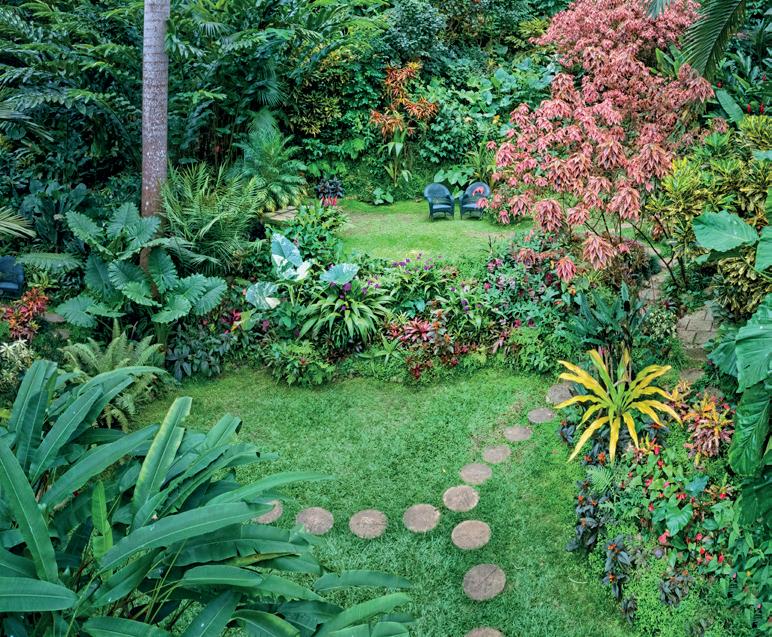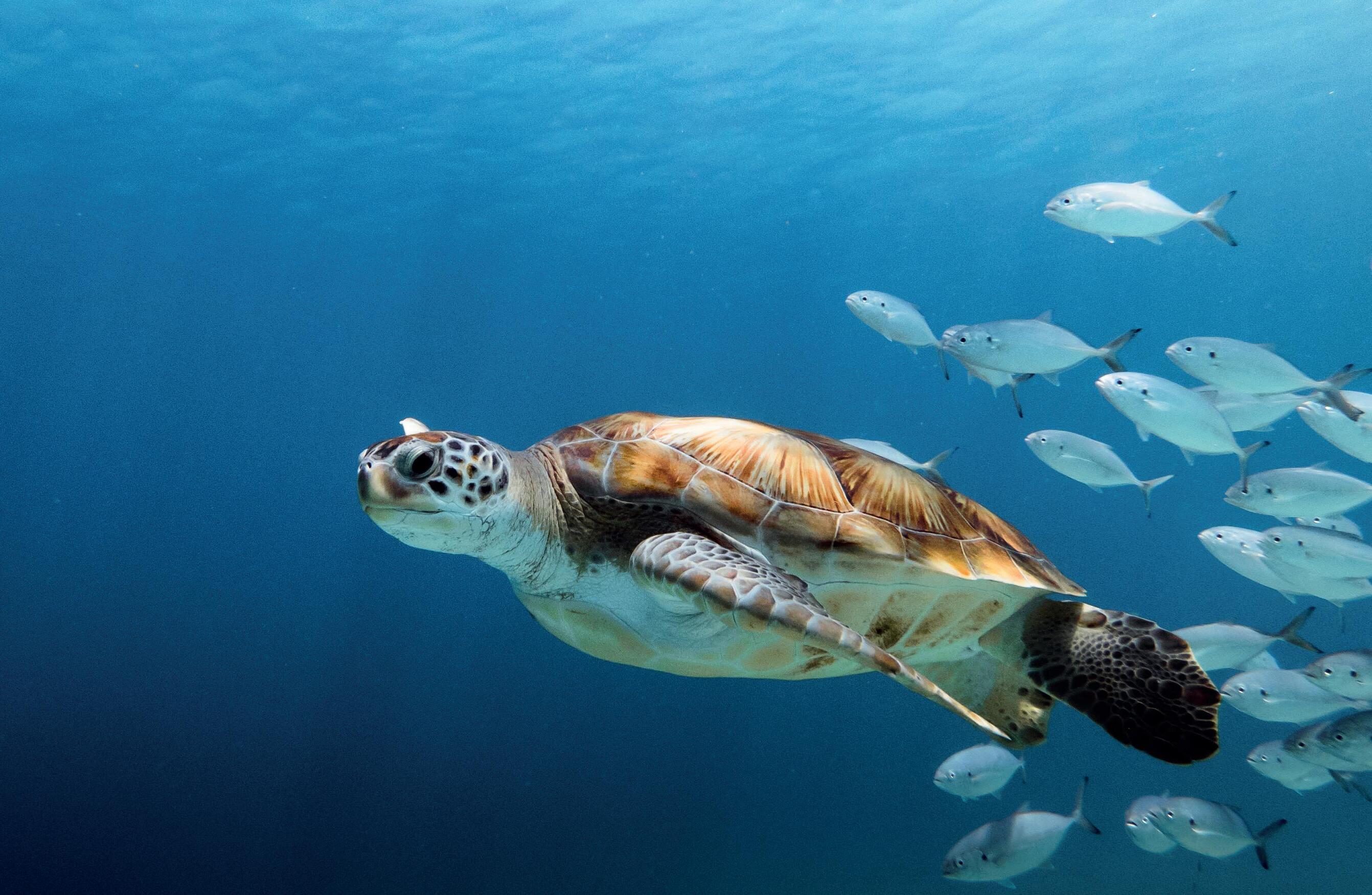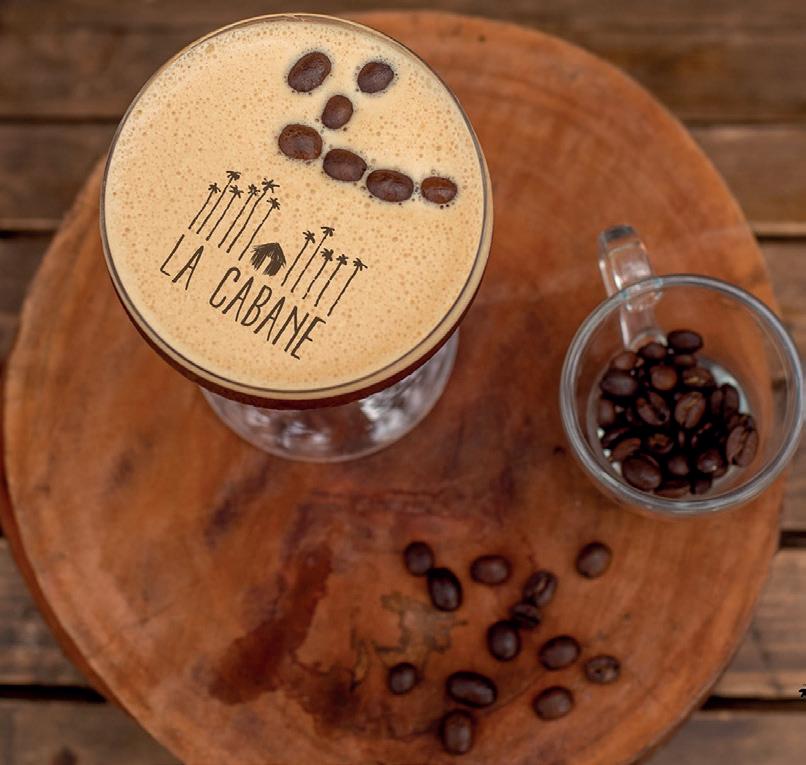
4 minute read
BASKING IN Barbados
Words Kat Romero
As the birthplace of the Caribbean’s sweet and earthy rum, the host of the esteemed Food and Rum Festival, started in 2009, and the famed national dish of flying fish stew with cou-cou, you may be forgiven for thinking Barbados’ biggest draw is its vibrant culinary scene.
Advertisement
And while that does attract foodies from across the globe, this coral island is also home to some 80 pristine white-sand beaches, turquoise waters and a rich marine landscape.
As a tourist hotspot, with a reported nearly one million been hailed as a leader in green development in the Caribbean. And there are so many wonderful ways to practise sustainable tourism when you visit Barbados, allowing travellers to feel as though they are appreciating and also maintaining it for future generations.

Giving Back To The Community
Something that really promotes a sense of purpose is the vast array of volunteer schemes on offer to tourists, popularly known as voluntourism. As with many of the Caribbean islands, community is key in Barbados and visitors a year, it’s important to the islanders that they maintain and sustain the beautiful scenery and delicate ecosystems of Barbados. So much so, the island has organisations have made it their mission to give back and ensure vulnerable groups in the society are catered for.
Variety Barbados – The Children’s Charity focuses on improving the quality of life for children on the island and volunteers can give their time or donations to the cause. Animal lovers can volunteer at the Ark Animal Welfare Society, which was formed in 1998 to improve the provision of care for stray dogs and now works to rehome both dogs and cats. Volunteers can dedicate their time to the animals, taking them on walks and assisting with food deliveries.
Other charities are devoted to the health of the island.
Future Centre Trust has a focus on sustainability, conservation and preservation, and allows volunteers to join programmes such as Clean Up Barbados, Future Trees and Green Business Barbados. Visitors can also get their hands dirty by planting trees at various locations, including Coco Hill Forest, a 53-acre agrotourism project that boasts 3km of picturesque hiking trails overlooking the east coast of the island.
Barbados’ marine life is one of its biggest attractions with two of the rarest sea creatures, the hawksbill and the leatherback turtles, calling the island home.
Once hunted for their meat, eggs and shells, their population size has been dramatically reduced. Encouragingly, the turtles are now protected with a ban on hunting, and visitors to the island can get involved with The Barbados Sea Turtle Project to help ensure the future of these fascinating creatures. Volunteers
Good News From Barbados
Barbados has a rich history of sustainability, with the island using solar technology since the 1970s and saving an estimated US$130m as a result.
Not only are the island’s businesses, such as restaurants and hotels, using solar power but an estimated 2,500 homes have installed it too.
in the project will get to witness the turtles in their natural habitat as they help protect the nesting sites and assist baby turtles with their journey to shore.

Staying Green
businesses. Many of the restaurants base their menus on seasonable items and the availability of fresh fish and meat.
An estimated 125,000 trees have been planted in Barbados since 2019, following the launch of the One Tree For Every Bajan programme.
Barbados is home to a wealth of hotels catering to all tastes and budgets. But in 2019, political activist David Comissiong urged the Caribbean islands to go green, with a particular focus on the hotel industry. His definition of a green hotel was one that employed staff from the local community, sourced produce from local farmers and business, and featured locally crafted furniture and art.
As a result of this, many hotels on the island now have such things as more energyefficient LED lighting as standard, and offer guests a ‘green stay’ option, which allows them to reuse sheets or bottles and enjoy smaller meals to reduce food waste.
Some restaurants are also choosing to use alternative sources of power rather than Barbados Light and Power, which imports fossil fuels and is the island’s sole electricity utility provider. For holidaymakers wanting to taste the freshest produce, there are several food markets to visit, including Cheapside Market and Brighton Farmers Market.
The island has taken bold steps to reduce its use of single-use plastic. In 2018, legislation banned the import of singleuse plastic and later that year, the sale and distribution of it. In 2020, a ban was placed on petrol-based plastic bags (excluding those used for pharmaceuticals, hygiene products and food).
Turtles were once facing the threat of extinction yet thanks to Barbados’ conservation projects, including The Barbados Sea Turtle Project, the population is on the rise.

The island’s culinary offerings are becoming increasingly sustainably sourced with a focus on local produce and supporting local
The eco-friendly efforts of Barbados have been so extensive and considered, the country has been hailed by many for leading the way in sustainable tourism.
And the island shows no signs of slowing down – it was revealed in 2020 that its goal is to become 100% renewable by 2030, an accomplishment that would make Barbados the first 100% green and fossilfuel free island-state in the world.
EAT LOCAL, EAT WELL

La Cabane restaurant is situated at Batts Rock Beach and is a popular spot with locals and tourists alike. Almost 100% of its menu is locally sourced and it focuses on organic produce. Owner Papa Jules is a health enthusiast and offers healthy breakfasts that include detox juices, and employs local sommeliers and mixologists for its alcoholic offerings. You can also enjoy a variety of wellness activities at the restaurant, including paddle boarding, swimming lessons, cardio and meditation. lacabanebarbados.com










